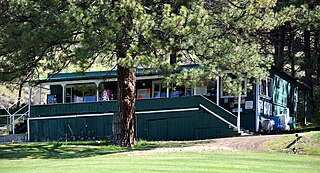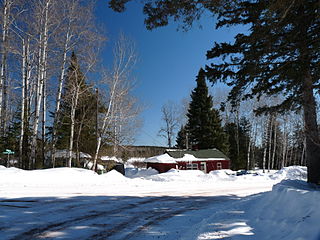
Birmingham is a city in the north central region of Alabama. Birmingham is the county seat of Jefferson County, Alabama's most populous county. As of the 2022 census estimates, Birmingham had a population of 196,910, down 2% from the 2020 census, making it Alabama's third-most populous city after Huntsville and Montgomery. The broader Birmingham metropolitan area had a 2020 population of 1,115,289, and is the largest metropolitan area in Alabama as well as the 50th-most populous in the United States. Birmingham serves as an important regional hub and is associated with the Deep South, Piedmont, and Appalachian regions of the nation.

Helena is a city in Jefferson and Shelby counties in the state of Alabama. Helena is considered a suburb of Birmingham and part of the Birmingham-Hoover Metropolitan Area. As of 2022 the United States Census Bureau estimates the population to be 21,862.

Tuscaloosa is a city in and the county seat of Tuscaloosa County in west-central Alabama, United States, on the Black Warrior River where the Gulf Coastal and Piedmont plains meet. Alabama's fifth-most populous city, the population was 99,600 at the 2020 census, and was estimated to be 110,602 in 2022. It was known as Tuskaloosa until the early 20th century. It is also known as "the Druid City" because of the numerous water oaks planted in its downtown streets since the 1840s.

Potlatch is a city in the northwest United States, located in north central Idaho in Latah County, about six miles (10 km) east of the border with Washington. On the Palouse north of Moscow, it is served by State Highway 6, and bordered on the northeast by the small community of Onaway. The population of Potlatch was 804 at the 2010 census.

Muscogee is a ghost town located twenty miles northwest of Pensacola, Florida, United States, in Escambia County, along the Perdido River. Named after the Muscogee Lumber Company, formed by Georgia lumber men, the town was founded in 1857 by a group of lumbermen to harvest timber from the surrounding pine forests. They and the following company clearcut the timber, and once the forests were gone, lumbering ended in this area.
The Birmingham District is a geological area in the vicinity of Birmingham, Alabama, where the raw materials for making steel - limestone, iron ore, and coal - are found together in abundance. The district includes Red Mountain, Jones Valley, and the Warrior and Cahaba coal fields in Central Alabama.

Kinzua is a ghost town or former town site in Wheeler County, Oregon, United States. It existed as a company town from 1927 to 1978. Kinzua lies directly east of Fossil and uses a Fossil mailing address.

Morse is an unincorporated community located in the town of Gordon, Ashland County, Wisconsin, United States. Morse is located along the Bad River 7.5 miles (12.1 km) south-southeast of Mellen.

Hollins is a census-designated place and unincorporated community in Clay County, Alabama, United States. Its population was 517 as of the 2020 census.
Chapman is an unincorporated community in Butler County, Alabama, United States. Chapman is located on County Route 37, 2.9 miles (4.7 km) west-northwest of Georgiana. Chapman has a post office with ZIP code 36015.

John Lanzel Kaul (1866–1931) was an American businessman. He was involved in the timber industry and was a prominent figure in Birmingham, Alabama.
Brownville, also known as Brownsville, Hog Eye, Red Valley, and Sulpher Springs, is a ghost town formerly located in Tuscaloosa County, Alabama, United States.
Musser Lumber Company was a US lumber company, and one of Iowa's pioneer lumber concerns. In its day, it was one of the most complete and modern lumber mills on the Mississippi River, employing about 400 men during the working season, and between 200 and 300 men in the logging end of the business.
Riordan was a populated place situated in Coconino County, Arizona, United States. It has an estimated elevation of 7,316 feet (2,230 m) above sea level.
Covin, also known as Brockton or Tallula, is an unincorporated community in Fayette County, Alabama, United States.
Riderwood is an unincorporated community in Choctaw County, Alabama, United States.
Piper is an unincorporated community in Bibb County, Alabama, United States.

Chinnabee, also spelled Chinneby or Chinnibee, is an unincorporated community in Talladega County, Alabama, United States.
Bon Ami is a ghost town that was located in what is currently Beauregard Parish, approximately 2 miles south of Deridder, Louisiana, United States. The site of the town itself is located at coordinates 30°48'12.03"N 93°17'40.08"W, and is abandoned. United States Geological Survey maps from 1947 show the location of the town, where the Kansas City Southern and the Louisiana & Pacific railways are parallel.











